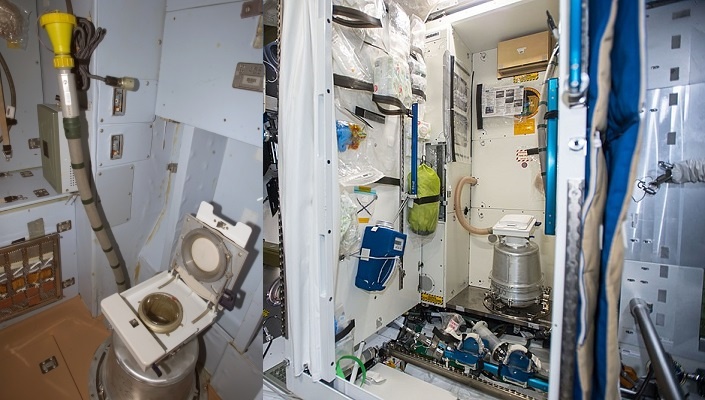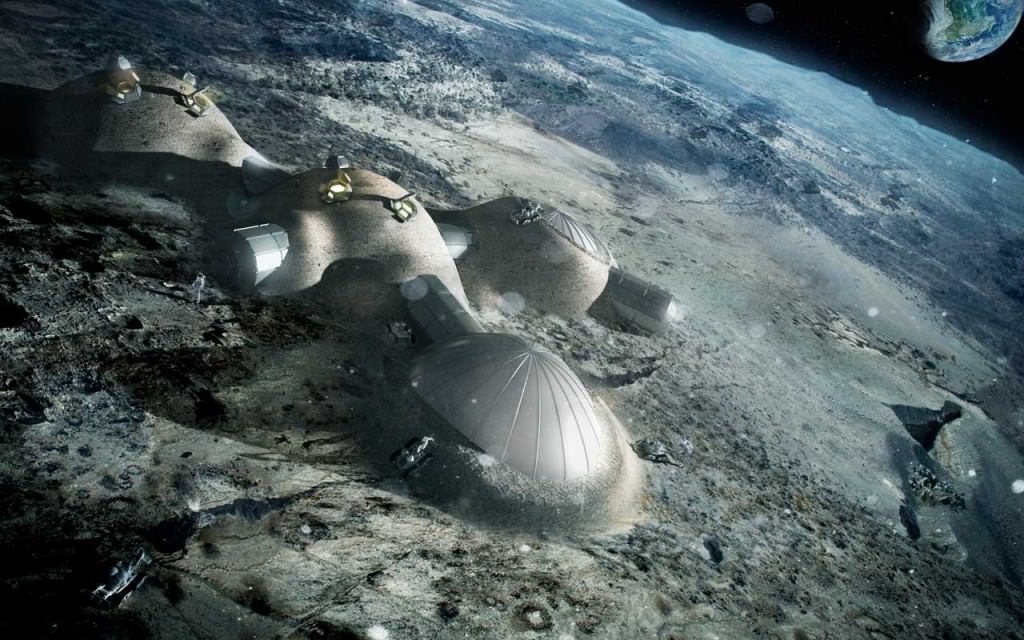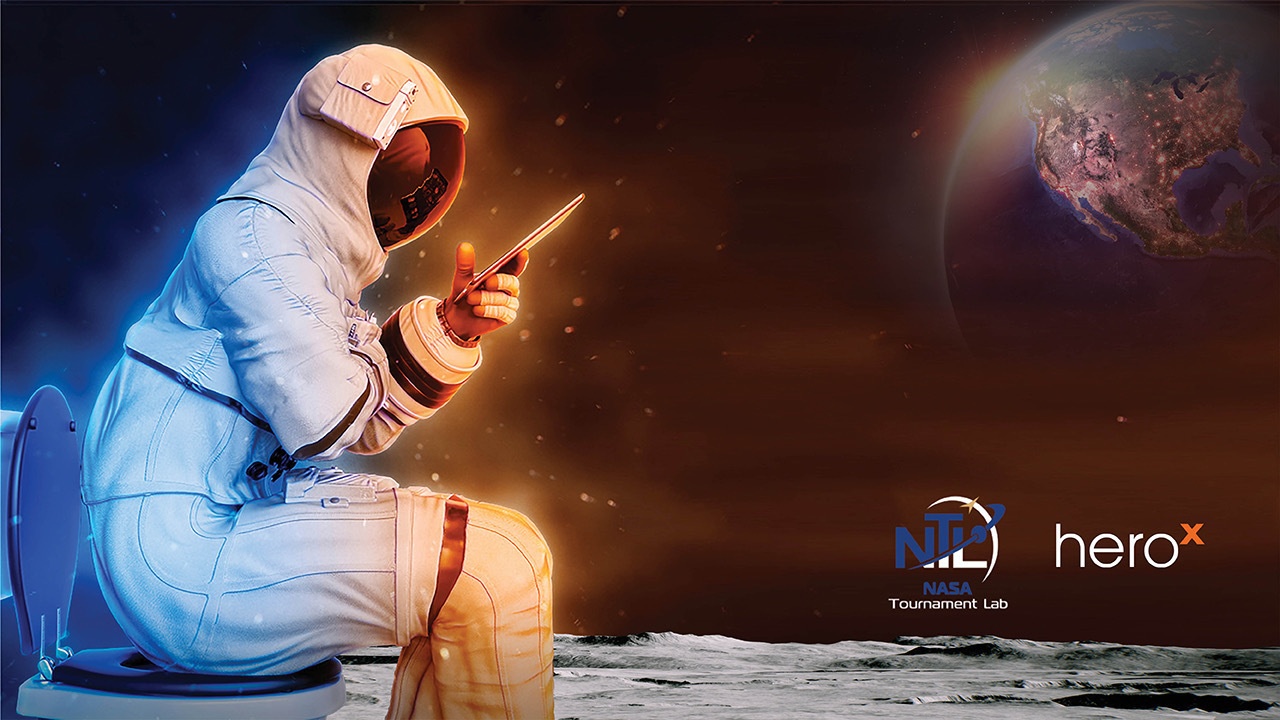Right now, NASA is working towards its long-awaited return to the Moon. Known as Project Artemis, this program aims to send the “first woman and next man” to the lunar surface by 2024. Beyond that, NASA also plans to establish a “sustainable program of lunar exploration” with commercial and international partners. This means building the infrastructure that will allow people to stay on the Moon and facilitate eventual missions to Mars.
In order to meet this challenge, there are all kinds of questions that need to be addressed first. Besides the matter of how we can keep astronauts healthy during long-duration missions, there’s also the pressing question of how astronauts will relieve themselves on the Moon. Luckily for them, HeroX has launched the Lunar Loo Challenge – sponsored by the NASA Tournament Lab (NTL) – to come up with innovative new ideas!
To break it down, astronauts are going to need lots of equipment in order to survive and conduct long-term missions on the Moon. Beyond the need for shelter that can protect them from the near-vacuum of space, temperature extremes, and radiation, there’s also everything they will need to have a steady supply of food and drinking/irrigation water. And of course, there needs to be a place for them to urinate and defecate when they need to.

On top of all that, astronauts will need to contend with microgravity – as they do aboard the International Space Station (ISS) – as well as lunar gravity, which the Apollo astronauts were the last to experience. Mike Interbartolo, who is managing the Lunar Loo Challenge out of NASA’s Human Landing System (HLS) Crew Compartment Office, explained the importance of suitable facilities as follows:
“Our astronauts accomplish amazing feats of science and space exploration. But at the end of the day, they’re still human. We need to provide them with the same necessities as here on Earth so they can continue to do their job.”
Thanks to the Space Shuttle program and decades of work by multiple space agencies, strategies already exist for disposing of human waste in microgravity. Aboard the ISS, astronauts rely on the Environmental Control and Life Support System (ECLSS) that helps manage human waste as part of its task of ensuring a steady supply of water. Then you have the fan-driven suction system called the Waste and Hygiene Compartment (WHC).
However, these are not designed for lunar gravity – roughly 16.5% that of Earth’s (0.1654 g) – and toilets aboard the lunar lander will need to be smaller, lighter, and less complicated to cut down on mass and the need for propellant. For this reason, astronauts will need a new type of toilet that can provide the same capabilities as ones here on Earth for when they are inside the surface habitat and out of their spacesuits.

HeroX emphasizes these limitations and the need for something novel on the competition page:
“Although space toilets already exist and are in use (at the International Space Station, for example), they are designed for microgravity only. NASA is looking for a next-generation device that is smaller, more efficient, and capable of working in both microgravity and lunar gravity.”
While NASA is working to create their own “lunar loo,” they have also invited the global community to submit proposals and design concepts that could become part of Project Artemis. These designs can be adapted for use aboard the lunar landers that will transport astronauts between the Orion space capsule and the lunar surface, or for use within infrastructure on the lunar surface (like the Lunar Habitat).
While the exact dimensions and specifications of lunar toilets are not yet known, NASA has provided some general specifications and constraints. As they indicate, “NASA is looking for a next-generation device that is smaller, more efficient, and capable of working in both microgravity and lunar gravity.” Beyond that, proposals must also take into account the following design specifications and maximum-allowed values:
- Function in both microgravity and lunar gravity
- Have a mass of less than 15 Kg in Earth’s gravity
- Occupy a volume no greater than 0.12 m3
- Consume less than 70 Watts of power
- Operate with a noise level less than 60 decibels (no louder than an average bathroom fan)
- Accommodate both female and male users
- Accommodate users ranging from 58 to 77 inches tall and 107 to 290 lbs in weight

In addition, NASA has included some general performance specifications, which essentially come down to creating a toilet that has the same kind of functionality as a toilet here on Earth. At the bare minimum, crew members that are using the toilets must not be exposed to vacuum during use. The toilets must also prevent exposure to vacuum and be able to safely store urine and feces during a system’s failure.
Beyond that, the space toilet should be able to perform the following:
- Accommodate simultaneous urination and defecation
- Collect up to 1 liter of urine per use, with an average of 6 uses per crew per day
- Accommodate 500g of fecal matter per defecation, with an average of 2 uses per crew per day
- Accommodate 500g of diarrhea per event
- Accommodate an average of 114g of female menses, per crew per day
- Stabilize urine to avoid the generation of gas and particulates
- Accommodate crew use of toilet hygiene products, like toilet paper, wipes, and gloves
- Be clear of previous user’s urine and feces in preparation for the next use
- Allow for transfer of collected waste to storage and/or provide for external vehicle disposal. Minimal Lander volume requires regularly minimizing waste storage or removing it from the vehicle
- Allow for easy cleaning and maintenance, with 5 minute turnaround time or less between uses
NASA also emphasizes that toilet designs should be able to support a crew of two astronauts for 14 days, capable of operating in a pressure environment of 0.56 to 1 bar (8.2 to 14.7 psi) and tolerate vacuum (0 bar or psi) in the event of Extra-Vehicular Activities (EVA). Most importantly, proposals must be able to accommodate people of different genders and different types of waste (urine, feces, vomit, diarrhea, menses).
Speaking of vomit and diarrhea, NASA wants toilets that can accommodate sick crewmembers dealing with these ailments, though they still intend to on emesis bags (aka. “barf bags”) for the former. NASA has also stated that bonus points will be awarded to “designs that can capture vomit without requiring the crew member to put his/her head in the toilet.”
The proposed toilets must also be designed to conserve water in order to “help maintain a pristine environment inside the lander that is free of odors and other contaminants.” And above all, they must be easy to use, since NASA is not paying for complicated loos that take a long time to figure out. When you got to go, you got to go, right?
This is not the first time that NASA has turned to HeroX to help them find innovative solutions for the problem of “going” in space. In 2016, HeroX hosted the Space Poop Challenge (also sponsored by the NTL) which offered $30,000 in prizes for the development of a novel “in-suit waste management system” that could be adapted to an astronaut’s spacesuit and handle six days worth of waste.
Then there are the Maximum Absorbency Garment (MAGs) astronauts current use (which are basically adult diapers) while conducting 7-8 hour-long spacewalks. With 150 teams from 130 countries, a total of over 20,000 competitors, the top three winning concepts included the MACES Perineal Access & Toileting System (M-PATS), the Air-Powered Spacesuit Waste Disposal System, and the SWIMSUIT – Zero Gravity Underwear.

The Lunar Loo Challenge consists of two parts: the Technical and the Junior categories. For the Technical category, participants must be at least 18 years of age and the top three submissions will receive a total of $35,000 in prizes ($20,000, $10,000, and $5000, respectively.) The winning teams will also get the opportunity to rub shoulders with NASA engineers and a private tour of the Johnson Space Center.
The Junior category, meanwhile, will have consist of three groups based on the entrant’s age – 15-17, 11-14, and under 11. The prizes for the winners of all three age groups will include a certificate and public recognition, as well as NASA merchandise and some unspecified “mystery prizes.”
The Challenge officially launched last week (June 23rd, 2020) and both categories will remain open to submissions until August 17th. The winning submission announced by September 30th. The window to enter may be brief, but that’s just because NASA wants to get there sooner. So if you got ideas or designs you want to share, there’s still time!
For more information, check out the competition page.
Further Reading: NASA, HeroX

